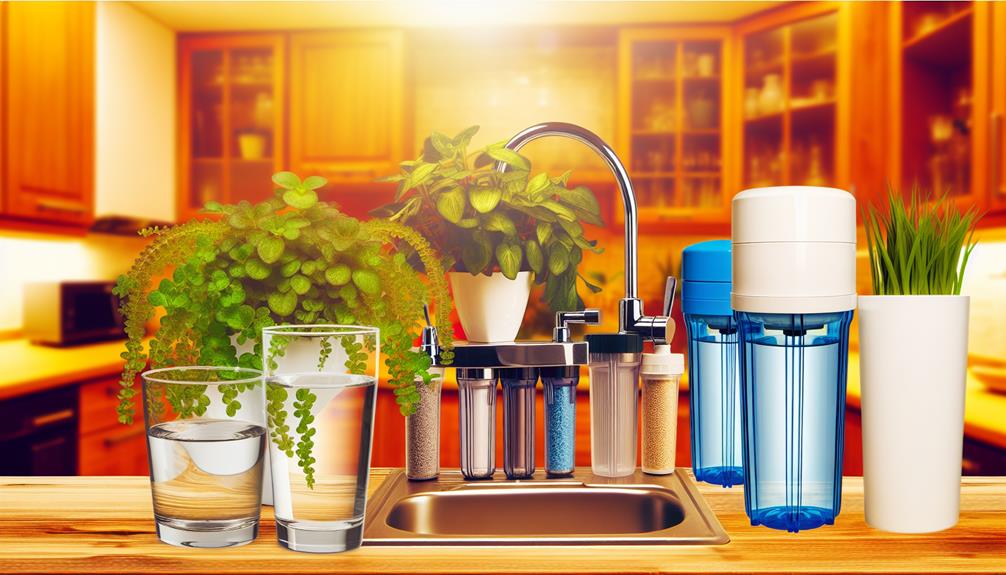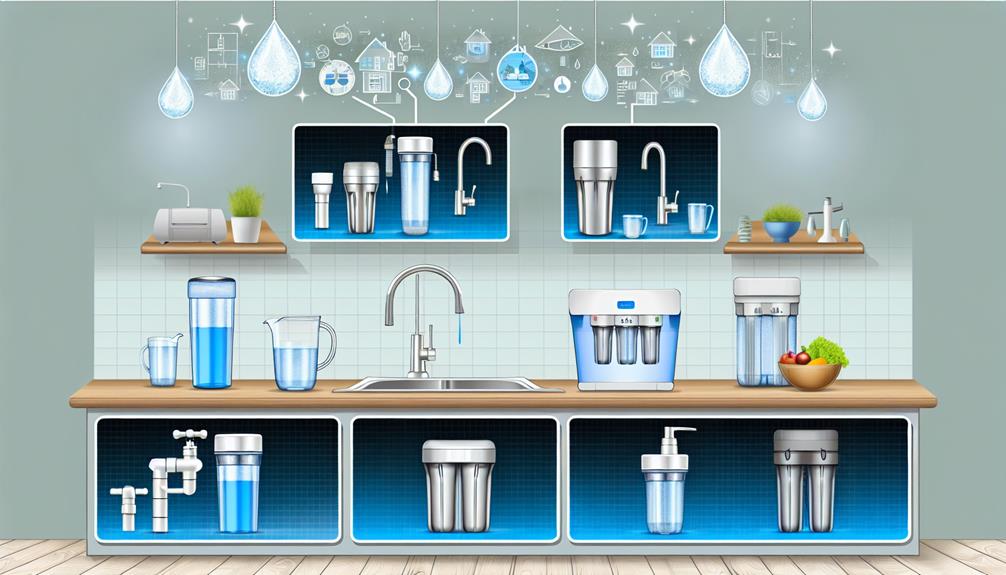You filter your choices, you filter your water, but are you filtering the information to make the best decision for your health and home?
As you stand before the plethora of water purifier options, you're not just choosing a product; you're choosing the guardian of your water's purity.
With a marketplace saturated with technologies ranging from simple carbon filters to advanced reverse osmosis systems, you need to understand the nuances that differentiate them to determine which one aligns with the specific needs of your household.
Consider this: the right choice could lead to years of safe, clean drinking water, while the wrong one could impose needless costs and maintenance headaches.
As you weigh the importance of each factor, from initial investment to long-term benefits, know that the key to unlocking the mystery of perfect purification lies just ahead, in a well of knowledge yet untapped.
Assessing Water Quality Needs
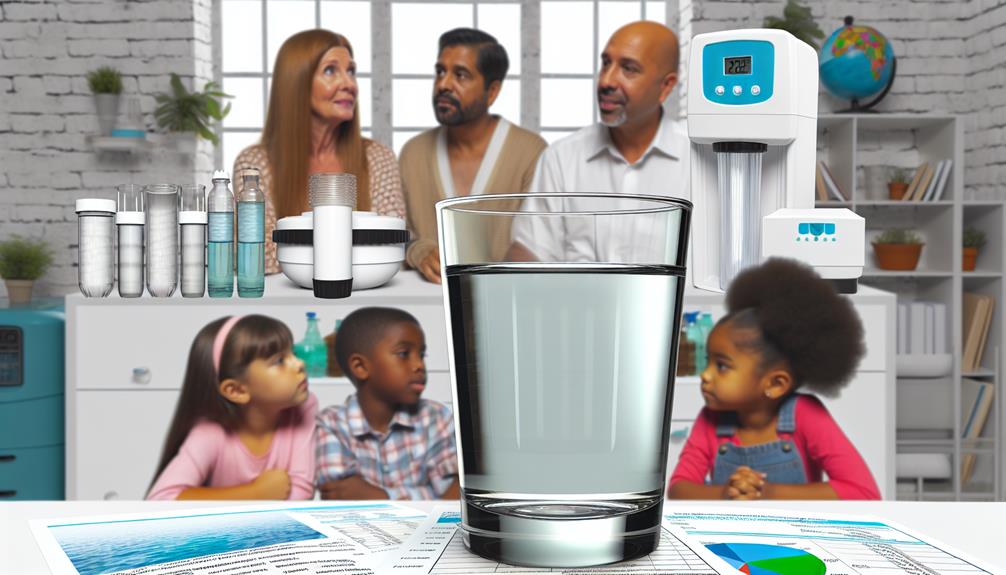
Before selecting a water purifier, you must evaluate the specific contaminants present in your water supply to ensure the chosen system effectively addresses your purification needs. Commence with a comprehensive water analysis, which determines the concentrations of various pollutants. Your focus should extend beyond common contaminants such as chlorine, lead, and pesticides; you also need to consider biological hazards like bacteria and protozoa that might be lurking unseen.
Engage in a taste evaluation to uncover subtler issues affecting palatability, which could indicate the presence of dissolved minerals or decaying organic matter, often undetectable through visual inspection alone. High levels of total dissolved solids (TDS), for instance, can impart a metallic or salty taste, while certain bacteria can produce a sulfurous odor.
Your technical approach shouldn't overlook the relevance of pH levels and water hardness, as these factors can influence both the efficacy of purification processes and the longevity of your water purifier.
Armed with precise knowledge of your water's unique profile, you'll be well-equipped to select a filtration system tailored to eradicate the specific water contaminants you're facing, thereby ensuring your drinking water isn't just safe but also pleasant to taste.
Understanding Filtration Methods
To ensure the most effective removal of impurities from your water, it's essential to understand the various filtration methods available and how they work. Filter efficacy varies with each technology, each designed for specific contaminant removal challenges.
Here's a concise breakdown of common filtration methods:
| Method | Contaminant Removal | Mechanism |
|---|---|---|
| Activated Carbon | Chlorine, VOCs | Adsorption of impurities |
| Reverse Osmosis | Salts, Fluoride | Semi-permeable membrane filter |
| Distillation | Bacteria, Viruses | Evaporation and condensation |
Activated carbon filters employ a bed of activated carbon to remove contaminants through adsorption, trapping particles within the pore structure of the carbon substrate. This method excels in removing chlorine and volatile organic compounds (VOCs), improving taste and odor.
In reverse osmosis (RO), water pressure pushes against a semi-permeable membrane, permitting water molecules to pass but rejecting a wide range of contaminants, including salts and fluoride. RO systems are recognized for their high filter efficacy in reducing dissolved solids.
Distillation involves boiling water to produce vapor, which then condenses back to liquid form, leaving behind most impurities. This process is effective against a broad spectrum of pathogens, including bacteria and viruses, ensuring a high degree of purity.
Comparing Filter Technologies
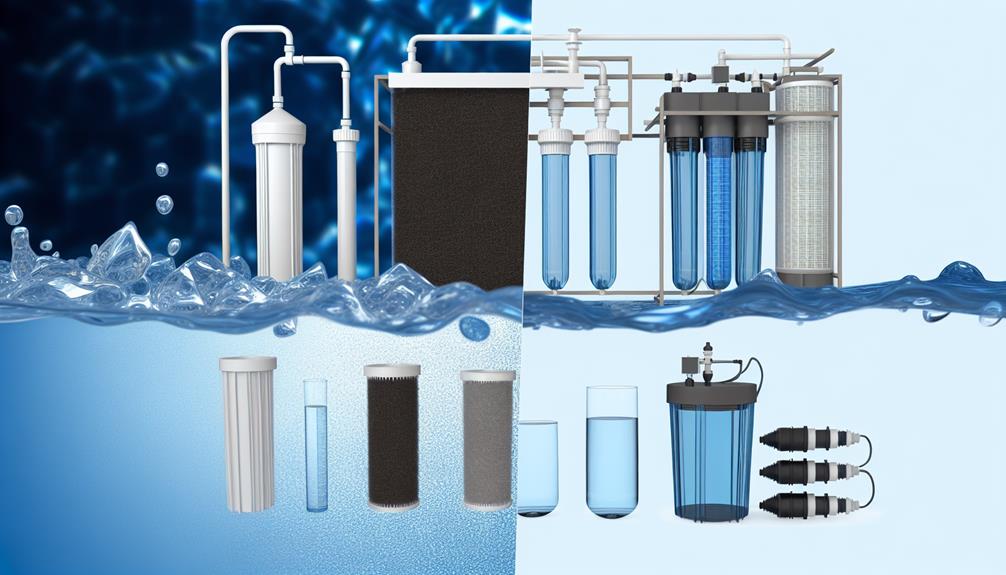
Having grasped the mechanisms behind common filtration methods, let's now examine how these technologies compare in terms of efficiency, cost, and suitability for various water quality concerns.
When considering filter lifespan, reverse osmosis (RO) systems typically require membrane replacement every 2 to 3 years, depending on usage and feed water quality. Activated carbon filters, in contrast, have a shorter lifespan, often necessitating replacement every 6 to 12 months. Sediment filters, serving as pre-filters, also need frequent changes to prevent clogging and maintain performance.
Installation requirements vary significantly between systems. Under-sink RO units demand more complex installation, usually requiring professional assistance. They often include a dedicated faucet and can entail modifications to plumbing. Countertop and faucet-mounted carbon filters offer easier installation with minimal tools; however, they mightn't provide the same level of purification as more involved systems.
In terms of efficiency, multistage units that combine RO, carbon filtration, and sometimes UV light, offer the broadest contaminant removal capabilities, addressing particulates, chemicals, and microorganisms effectively. However, these systems are also the most costly, both upfront and in ongoing maintenance. For basic water quality concerns, a simple carbon filter may suffice, striking a balance between cost and function.
Consider your specific water quality needs and maintenance commitment when choosing the right water purifier for your home.
Maintenance and Longevity Considerations
Ensure your water purifier's optimal performance and longevity by understanding the maintenance requirements and potential wear points of different filtration systems. Regular upkeep not only guarantees the quality of your water but also prevents untimely breakdowns and costly repairs.
- Maintenance Essentials
- *Filter Replacements*: Crucial for maintaining purification efficacy. Frequency varies by model and usage. Ensure you follow the manufacturer's recommended schedule.
- Sediment filters: Replace every 3-6 months
- Activated carbon filters: Change every 6-12 months
- Reverse osmosis membranes: Typically last 2-3 years
- *System Sanitization*: Conduct bi-annual cleaning to prevent microbial growth and system contamination.
- Warranty and Longevity
- *Warranty Terms*: Examine the warranty for coverage of vital components and labor. Some warranties may extend to specific parts, like the UV light or RO membrane, for varied periods.
- Component-specific coverage: Check for individual part warranties
- Labor inclusion: Verify if the warranty covers the cost of labor for repairs
Adhering to these guidelines will ensure that your water purifier functions efficiently over its lifespan.
Stay informed about the required maintenance and warranty terms to avoid unexpected expenses and maintain a consistent supply of clean, safe water.
Budgeting for Water Purifiers
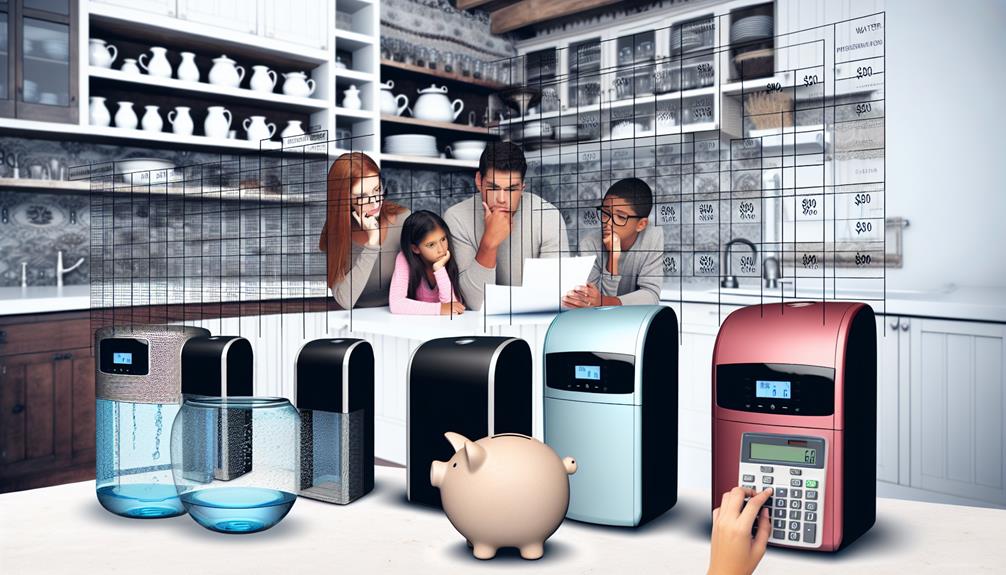
When budgeting for a water purifier, it's essential to consider both initial costs and ongoing expenses related to maintenance and filter replacements. Installation costs can vary significantly based on the complexity of the system you choose. It's prudent to factor in these costs upfront to avoid any surprises. Additionally, examine the warranty options that accompany various purifiers. A comprehensive warranty can mitigate future expenses, ensuring that your investment is protected against potential defects or performance issues.
To illustrate, here's a breakdown of potential costs:
| Expense Category | Initial Cost | Ongoing Cost |
|---|---|---|
| Unit Purchase | $100 – $800 | – |
| Installation | $0 – $200 | – |
| Filter Replacement | – | $30 – $150 |
| Warranty Extension | – | $20 – $100 |
Conclusion
In conclusion, you've evaluated your water quality needs. You've dissected various filtration methods and compared cutting-edge technologies. You've also considered maintenance and budget.
Now, you're equipped to select a water purifier that's tailored to your specific requirements. Remember, investing in the right system not only ensures safe drinking water but also contributes to the longevity of your appliance.
Choose wisely, and you'll secure both your health and peace of mind.
